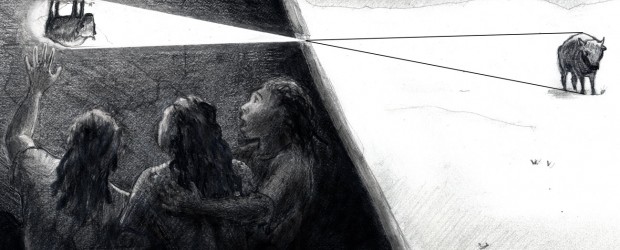Paleo-camera
Paleo-camera
There was a time before art and then there was art. What happened? How could a person stumble upon the idea of representation? The simple answer is: by living in a tent. Harsh climates during the Paleolithic forced members of the human lineage to make rudimentary tents. Inside these dwelling spaces small random holes would coincidentally and occasionally project moving images. This is what artist Matt Gatton calls the Paleo Camera Obscura. The people inside the tent could not see the living animal outside at the same time as they saw its image inside. The image and the object werein opposite directions from each other. In that perceptual moment the animal on the wall was independent of any real object. It was a representation, a two-dimensional approximation of the physical world. A randomly projected image stands for a real object, planting the idea of a referent, the beginning of art.
For the exhibition The Prehistory of the Image, Gatton will build a Paleo Camera Obscura tent. Gatton’s Paleo Camera Obscura Theory has been presented at the University of Lisbon, Vanderbilt University, University of Cologne, University of Oxford, University of Calabria, and Slovak University, among others.
APERTURE, INSIDE THE HIDE WALL ERECTUS, PALEOLITHIC TENT AND THE CAMERA OBSCURA EFFECT PALEOLITHIC DWELLING STRATEGY: A WALL OF HIDES DRAPED OVER A CAVE MOUTH | cOPRODucED BY STUK KUNSTENCENTRUM | cOuRTEsY MATT GATTON

